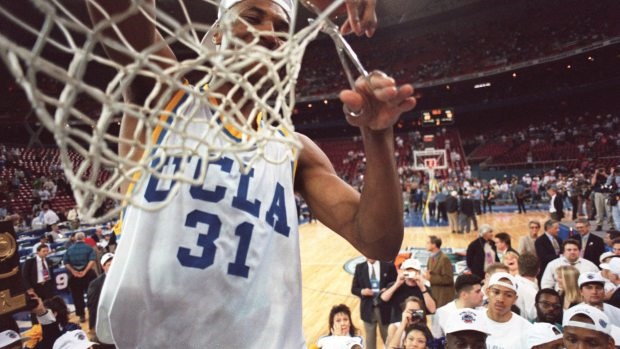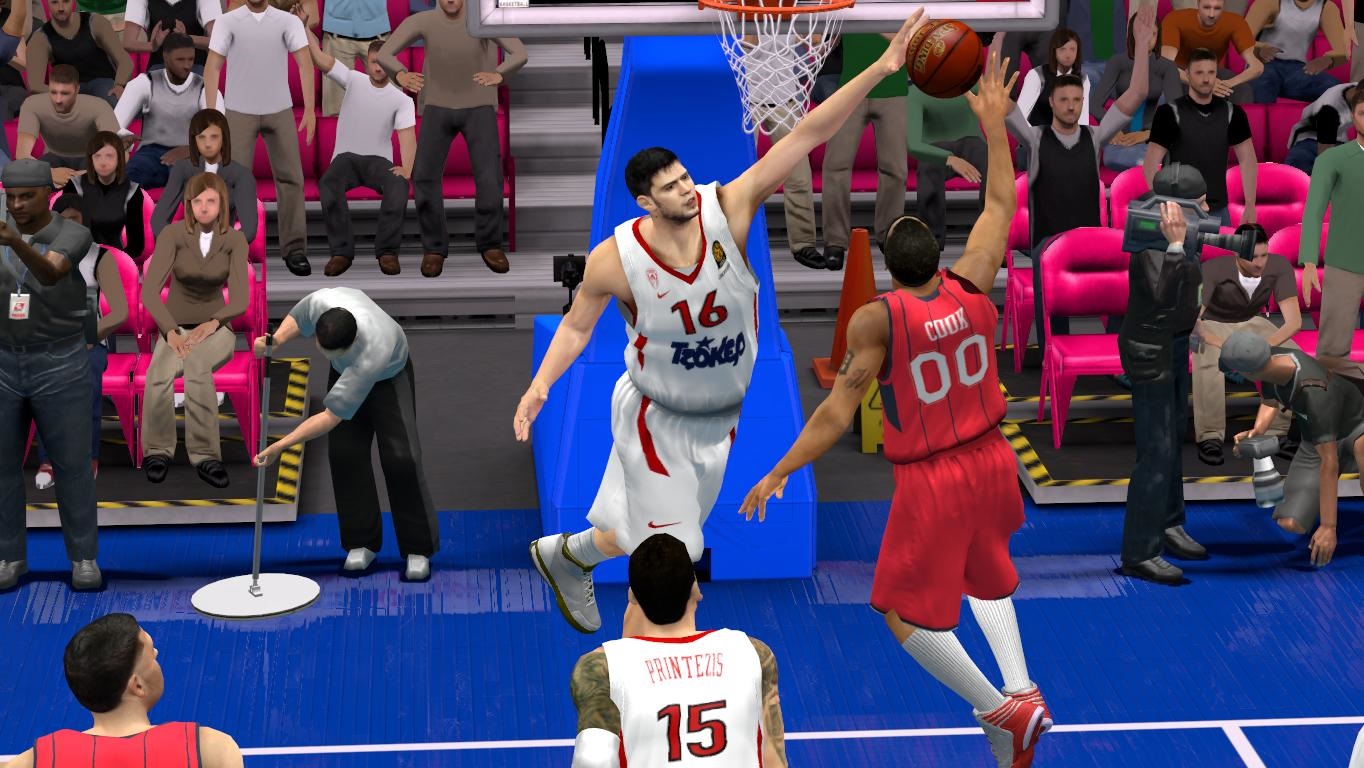The rise of Dutee Chand, India’s 100 and 200-meter champion
in the under 18-category, was astonishing. Her achievements were more than
promising: after only two years, she broke the 100m and 200m national junior
records, competed in the 100m final at the World Youth Athletics Championships
in Donetsk and collected two gold medals in the Asian Junior Championships in
Chinese Taipei. But, in July 2014, this steady rise was abruptly halted.
Following a request from the Athletics Federation of India (AFI), the Sports
Authority of India (SAI) conducted blood tests on the Indian sprinters. Dutee
was detected with female hyperandrogenism, i.e a condition where the female
body produces high levels of testosterone. As a result, a few days before the
Commonwealth Games in Glasgow, the AFI declared Dutee
ineligible to compete under the IAAF Regulations and prevented her from competing in future national and
international events in the female category. Pursuant to the IAAF
‘Hyperandrogenism Policy’, the AFI would allow Dutee to return to competition
only if she lowers her testosterone level beneath the male range by means of
medical or surgical treatment.[1]
On 25 September 2014, Dutee filed an appeal before
the CAS, seeking to
overturn the AFI’s decision and declare IAAF and IOC’s hyperandrogenism
regulations null and void. She is defending her right to compete the way she
actually is: a woman with high levels of testosterone. Interestingly enough,
albeit a respondent, AFI supports her case.
IAAF and IOC rules set limits to female
hyperandrogenism, which is deemed an unfair advantage that erodes female sports
integrity. While these rules have been contested with regard to their scientific and ethical aspects, this is the first time
that they will be debated in court. This appeal could have far-reaching
ramifications for the sports world. It does not only seek to pave the way for a
better ‘deal’ for female athletes with hyperandrogenism, who are coerced into
hormonal treatment and even surgeries to ‘normalise’ themselves as women[2],
but it rather brings the CAS, for the first time, before the thorny question:
How to strike a
right balance between the core principle of ‘fair play’ and norms of
non-discrimination, in cases where a determination of who qualifies as a ‘woman’
for the purposes of sport has to be made? More...
On 8 August, U.S. District
Judge Claudia Wilken ruled in favour of former UCLA
basketball player O'Bannon and 19 others, declaring that NCAA's longstanding refusal
to compensate athletes for the use of their name, image and likenesses (NILs) violates
US antitrust laws. In particular, the long-held amateurism
justification promoted by the NCAA was deemed unconvincing.
On
14 November, the NCAA has appealed the judgment, claiming that federal judge erred in law by
not applying a 1984 Supreme Court ruling. One
week later, the NCAA received support from leading antitrust professors who are challenging the
Judge Wilken’s reasoning in an amicus curiae. They are concerned that the judgment may jeopardize
the proper regulation of college athletics. The professors argued that if
Wilken’s judgment is upheld, it
“would substantially expand the power of the federal courts to alter
organizational rules that serve important social and academic interests…This
approach expands the ‘less restrictive alternative prong’ of the antitrust rule
of reason well beyond any appropriate boundaries and would install the
judiciary as a regulatory agency for collegiate athletics”.
More...
In the wake of the
French Labour Union of Basketball (Syndicat National du Basket, SNB) image
rights dispute with Euroleague and EA Games, we threw the “jump ball” to start
a series on players’ image rights in international professional basketball. In our first blogpost, we discussed why
image rights contracts in professional basketball became a fertile ground for disputes
when it comes to the enforcement of these contracts by the Basketball Arbitral
Tribunal (BAT). Indeed, we pointed out that clubs might take advantage of the
BAT’s inconsistent jurisprudence to escape obligations deriving from image
rights contracts.
In this second limb, we will open a second
field of legal battles “around the rim”: the unauthorized use of players’ image
rights by third parties. We will use as a point of reference the US College
Athletes image rights cases before US Courts and we will thereby examine the
legal nature of image rights and the precise circumstances in which such rights
may be infringed. Then, coming back to where we started, we will discuss the
French case through the lens of US case law on players’ image rights.

Source: http://philadelphia.cbslocal.com/2013/09/27/ea-sports-settles-college-likeness-case/ More...
The 40 recommendations of the Olympic Agenda 2020 are out! First
thought: one should not underplay the 40 recommendations, they constitute (on
paper at least) a potential leap forward for the IOC. The media will focus on the hot stuff: the Olympic
channel, the pluri-localisation of the Games, or their dynamic format. More
importantly, and to some extent surprisingly to us, however, the IOC has also fully embraced
sustainability and good governance. Nonetheless, the long-term legacy of the
Olympic Agenda 2020 will hinge on the IOC’s determination to be true to these
fundamental commitments. Indeed, the devil is always in the implementation, and
the laudable intents of some recommendations will depend on future political choices
by Olympic bureaucrats.
For those interested in human rights and
democracy at (and around) the Olympics, two aspects are crucial: the IOC’s
confession that the autonomy of sport is intimately linked to the quality of
its governance standards and the central role the concept of sustainability is
to play in the bidding process and the host city contract. More...
Last week, the French
newspaper Les Echos broke the story that UEFA (or better said its subsidiary)
will be exempted from paying taxes in France on revenues derived from Euro 2016.
At a time when International Sporting Federations, most notably FIFA, are facing
heavy criticisms for their bidding procedures and the special treatment enjoyed by their officials, this tax exemption was not likely to go unnoticed. The French minister
for sport, confronted with an angry public opinion, responded by stating that
tax exemptions are common practice regarding international sporting events. The
former French government agreed to this exemption. In fact, he stressed that without
it “France would never have hosted the competition and the Euro 2016 would
have gone elsewhere”. More...
Three weeks ago, I gave a talk for a group of visiting researchers
at Harvard Law School on the accountability of the IOC for human rights abuses
caused by hosting Olympic Games. On the day of that talk, Human Rights Watch announced
that the International Olympic Committee (“IOC”) would insert new language into
the Host City Contract presumably for the 2022 Olympic Games onwards. The new
language apparently requires the parties to the contract to:
“take all necessary measures to ensure that
development projects necessary for the organization of the Games comply with
local, regional, and national legislation, and international agreements and
protocols, applicable in the host country with regard to planning,
construction, protection of the environment, health, safety, and labour laws.”More...
The IOC has trumpeted it worldwide as a « historical
milestone »:
the United Nations has recognised the sacrosanct autonomy of sport. Indeed, the
Resolution A/69/L.5 (see the final draft) adopted by the General Assembly on 31 October states
that it “supports the independence and autonomy of sport as well as the
mission of the International Olympic Committee in leading the Olympic movement”.
This is a logical conclusion to a year that has brought the two organisations closer
than ever. In April, UN Secretary General Ban Ki-moon appointed former IOC President, Jacques Rogge, Special
Envoy for Youth Refugees and Sport. At
this occasion, the current IOC President, Thomas Bach, made an eloquent speech celebrating a “historic step forward to better
accomplish our common mission for humanity” and a memorandum
understanding was signed between the UN and the IOC. This is all
sweet and well, but is there something new under the sun?More...
A warning
addressed to fans of French teams featuring in the recently launched video game
NBA 2K15: Hurry up! The last jump ball for Strasbourg and Nanterre in NBA 2K 15
may occur earlier than expected. The French Labour Union of Basketball (Syndicat
National du Basket, SNB) is dissatisfied that Euroleague and 2K Games did not
ask (nor paid) for its permission before including the two teams of Pro A in
the NBA 2K15 edition. What is at issue? French
basketball players’ image rights have been transferred to SNB, which intends to
start proceedings before the US Courts against 2K Games requesting 120.000
euros for unauthorized use of the players’ image rights. SNB is clear: it is
not about the money, but rather to defend the players’ rights.[1]
Strasbourg and Nanterre risk to “warm up” the virtual bench if this litigation
goes ahead.

Source: http://forums.nba-live.com/viewtopic.php?f=149&t=88661&start=250 More...
The European
Commission’s competition decisions in the area of sport, which set out broad
principles regarding the interface between sports-related activities and EU
competition law, are widely publicized. As a result of the decentralization of
EU competition law enforcement, however, enforcement activity has largely
shifted to the national level. Since 2004, national competition authorities
(NCAs) and national courts are empowered to fully apply the EU competition
rules on anti-competitive agreements (Article 101 TFEU) and abuse of a dominant
position (Article 102 TFEU).
Even though
NCAs and national courts have addressed a series of interesting competition
cases (notably dealing with the regulatory aspects of sport) during the last
ten years, the academic literature has largely overlooked these developments.
This is unfortunate since all stakeholders (sports organisations, clubs,
practitioners, etc.) increasingly need to learn from pressing issues arising in
national cases and enforcement decisions. In a series of blog posts we will
explore these unknown territories of the application of EU competition law to
sport.
In this second installment of this blog series, we discuss a recent
judgment of the regional court (Landgericht) of Dortmund finding that the
International Handball Federation (IHF)’s mandatory release system of players
for matches of national teams without compensation infringes EU and German
competition law.[1] More...
The year is coming to an end and it
has been a relatively busy one for the CAS Ad Hoc divisions. Indeed, the Ad Hoc
division was, as usual now since the Olympic Games in Atlanta in 1996[1],
settling “Olympic” disputes during the Winter Olympics in Sochi. However,
it was also, and this is a novelty, present at the Asian Games 2014 in Incheon. Both divisions have had to deal with seven (published)
cases in total (four in Sochi and three in Incheon). The early commentaries
available on the web (here,
here
and there),
have been relatively unmoved by this year’s case law. Was it then simply ‘business
as usual’, or is there more to learn from the 2014 Ad Hoc awards? Two different
dimensions of the 2014 decisions by the Ad Hoc Division seem relevant to elaborate on : the jurisdiction quandary (part. 1) and the selection
drama (part. 2). More...